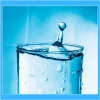Today, in all our daily actions, we increasingly need scientific validation from specialists in everything and nothing. Without it, we are no longer able to think, feel, and determine for ourselves what is beneficial to us.
It is not wise to denigrate Science, quite the contrary, but the almost systematic reliance on it leads to adopting, from time to time, erroneous reasoning, often with a purely scientific reasoning disconnected from experience.
Some people think that dietary detoxes are "nonsense." And with a lot of "scientific and technical" explanations, they will try to demonstrate this to you.
Others explain that if you feel better after following a vegetable juice cleanse for a few days, it is solely because, during that period, you did not consume any foods to which you were allergic or intolerant.
That being said, one can indeed note false claims regarding certain dietary supplements that are supposed to have "detox" properties promoting the elimination of accumulated waste in the body.
It cannot be denied that restricting one's diet in terms of quantity and quality (fewer different food groups) indeed allows us to consume fewer toxins, while also temporarily eliminating foods to which we are allergic or intolerant. This approach, focused on healthy and balanced eating, can help improve our well-being and prevent various health issues.
How to do a detox fast ?
Fasting involves abstaining from all solid or liquid food except pure water, with the aim of cleansing or purifying the body. Animals naturally and instinctively undergo fasting when they are injured or sick. Quite naturally, humans lose their appetite when their health deteriorates.
According to Claude Lagarde, Doctor of Pharmacy and Biologist:
"Drainage (or detox) is a stimulation of the blood filtration function and elimination through the emunctories (skin, lungs, kidneys, intestines). The methods used are varied: plants in infusion or foods with detoxifying properties, massages, intestinal enemas, etc. (...) As soon as the detoxification process begins, toxins leave en masse from the areas where they have accumulated and are eliminated through the emunctories, which can then become saturated in the most sensitive or most intoxicated individuals. Such a situation can manifest through various signs: headaches, nausea, fatigue, insomnia, diarrhea, ENT congestion, frequent urination, skin eruptions, muscle pain, etc."
Different mechanisms of protection and detoxification of the body.
Monodiets, especially those consisting of vegetable or fruit juices, often help detoxify the body, not only because of their biochemical properties but also due to an indirect phenomenon that we will discuss in the study of fasting mechanisms.
Some plants, vegetables, or fruits are noted to have cholagogue or choleretic properties that contribute to the natural detoxification processes of the body.
In his book "Nutrition or the Third Medicine," Dr. Seignalet specifies:
"(...) The elimination of waste from the joints often occurs through the bile ducts or across the colonic wall, leading to intestinal disorders."
Definition:
- Cholagogue: A cholagogue substance has the effect of facilitating the evacuation of bile towards the intestine by causing a bile discharge from the gallbladder, which empties by contracting.
- Choleretic: A substance that promotes choleresis, which is the production or secretion of bile by the liver.
By disregarding the numerous molecules and their actions found in various fruits, vegetables, and plants, which have just been studied, some people conclude that there are no specific biochemical properties in these so-called "detox" foods that can explain the body's detoxification processes.
Plants, fruits, and vegetables provide numerous vitamins, minerals, trace elements, and polyphenols that indirectly contribute to processes protecting cellular integrity by neutralizing toxic molecules for the body, such as free radicals.
"Endogenous protection is ensured by enzymes responsible for the inactivation of free radicals. The enzyme SOD and glutathione peroxidase are catalyzed by copper, manganese, zinc, or selenium (JADOT 1988)."
The anti-radical action of the body can be enhanced by the intake of various nutrients called antioxidants or free radical scavengers (Vitamin E, A, C, flavonoids, and polyphenols from Vitamin P).
In this case, without necessarily referring to a "detox cure," fruits, vegetables, and plants contribute through their components to the body's "protection" processes by neutralizing and eliminating toxic molecules such as free radicals.
Reminder: Free radicals are unstable chemical molecules produced during certain processes that are useful for cellular balance because they allow the destruction of non-conforming cells. However, they can also cause damage in the body when they are present in excess.
On the other hand, sulfoconjugation processes occur in the liver, which allow the body to eliminate products such as pesticides, herbicides, etc. Sulfur is essential for this process, which enables the liver to eliminate a large portion of toxic chemical substances from the body. Sulfur can be found in radishes, garlic, shallots, onions, chives, leeks, broccoli, cauliflower, Brussels sprouts, kale, kohlrabi, rutabaga, turnips, green cabbage, red cabbage, and oilseeds (nuts, almonds, hazelnuts)...
Another phenomenon contributes to the mechanisms of "detox cures." The water diet itself triggers the body's cleansing mechanisms. To understand what happens during a water diet, it would be interesting to first look at the mechanisms triggered by a water fast.
Why fast ?
As soon as we fast, instead of consuming food from external sources, we nourish ourselves "from within" through the autolysis of our own tissues, which provide us with all the nutrients we need in terms of minerals, vitamins, enzymes, lipids, amino acids, glucose, etc.
At the same time that the tissues are autolyzed or "burned," numerous toxins accumulated in the connective tissues (parenchyma), supporting tissues, and the body's fat reserves will be released back into circulation to be eliminated.
This process initiates a detoxification of the body, allowing it to shed its excesses and toxins. It is through this same mechanism that one can observe, after fasting (between the evening meal and the morning meal, a period during which no food is consumed) for 8 to 10 hours, dark yellow morning urine (because it is loaded with waste, particularly bilirubin), whereas the urine during the day is white or very light yellow.
Bilirubin is a yellowish-brown pigment produced by the breakdown of red blood cells. This substance is present in the liver and is normally eliminated through digestion.
Every morning during normal periods (excluding fasting and dieting) between 1 a.m. and 3 a.m., an inflammatory hydrolysis is triggered in the pituitary gland, relayed by the adrenal glands through an enzyme called "hyaluronidase." This enzyme releases toxins (accumulated in the connective tissues during the day) back into circulation to be eliminated, primarily through the kidneys.
During periods of fasting, this phenomenon is exacerbated, which is why one may observe vomiting of bile and mucus, very concentrated urine, vaginal discharge, etc., which are actually elimination processes (or crises). All of this is possible thanks to the energy saved that is usually spent on digestion and assimilation of our daily meals.
During a fast, the autolysis of pathological tissues (effusions, tumors, flocculates, cysts, sclerosed tissues) is also observed, as well as that of muscle proteins and adipocyte triglycerides. This autolysis (or self-digestion) of tissues occurs in inverse proportion to their significance.
The more pathological, aged, sclerotic, or tumorous the tissue is, the less important it is for the preservation and continuation of life, and the more it undergoes self-digestion. Conversely, the more noble the tissue (heart, nervous system, endocrine glands), the less it undergoes (or very little) autolysis. The process is directed with surprising and fantastic intelligence. These mechanisms explain, in some cases, the autolysis of deposits, cysts, fibroids, and even tumors during fasting. It is for these reasons that some have declared: "fasting is somewhat like a surgical operation without a scalpel."
What foods to eat for a detox fast ?
In a detox fast, the goal is to reduce caloric intake and focus on healthy and nourishing foods that contain essential nutrients for the body. However, it is important to note that a detox fast generally involves a reduction or complete elimination of food consumption for a given period. Here are some recommended foods before and after a detox fast:
Fruits and vegetables: Opt for a balanced diet by eating a variety of fresh fruits and vegetables, preferably organic. They are rich in vitamins, minerals, and antioxidants that support the detoxification process. Additionally, you can include nutritious vegetable broths in your diet, as they provide a hydrating source and essential nutrients to maintain your well-being during detoxification.
Good fats: Opt for healthy fats from foods such as avocados, nuts, seeds, and vegetable oils like olive oil and coconut oil.
Herbs and spices: Add herbs and spices such as turmeric, ginger, parsley, basil, and cumin to your dishes. They may have beneficial antioxidant and anti-inflammatory properties.
There are other foods to stop consuming at least 2 days before and to reintroduce 2 days after the fast, in order to give the body time to return to normal. This transition period, called the refeeding phase, is essential to avoid any discomfort when resuming eating after the fast. These foods include:
Whole grains: Choose whole grains such as quinoa, oats, brown rice, millet, etc. They provide fiber, complex carbohydrates, and essential nutrients.
Lean proteins: Include sources of lean proteins such as legumes and tofu. Proteins are necessary for the repair and regeneration of tissues.
Is it good to fast for 3 days ?
Prolonged fasting for three days can have beneficial effects for some people, but it is important to take several factors into account before deciding to fast for a few days. Here are some elements to consider:
- Before undertaking a prolonged fast of three days or more, it is essential to consult a healthcare professional, such as a doctor or a nutritionist. They can assess your overall health, identify any pre-existing medical conditions, and advise you on the safety and appropriateness of a prolonged fast in your specific case.
- Some individuals, such as pregnant or breastfeeding women, people with eating disorders, those with specific health issues, children, and the elderly, may be more vulnerable to the adverse effects of prolonged fasting. In these cases, prolonged fasting may not be recommended or may require close medical supervision.
- It is important to clearly define the objectives of your prolonged fast. Common reasons may include weight loss, body purification, improved mental clarity, or seeking potential health benefits. Ensure that your goals are realistic and in line with your overall health.
- During a prolonged fast, it is essential to maintain adequate hydration by drinking enough water. Depending on the duration of the fast, it may be recommended to take supplements to compensate for potential nutritional deficiencies and the caloric deficit due to the lack of food.
- If you decide to fast for three days or more, it is recommended to do so under the supervision of a healthcare professional. Regular medical monitoring can help track your health status, detect any potential issues, and adjust the fast accordingly.
Therapeutic fasting in France must be supervised by a doctor.
What happens in our body during fasting ?
In death by starvation, the following organic losses have been observed: fats 91%, muscles 56%, spleen 63%, blood 17%, heart 2%, nervous system 0% (approximately).
The liver contains only 75 to 150 grams of glucose in reserve. By the second day of fasting, these reserves are depleted, which is why gluconeogenesis is very active in the fasting individual. In a man who has been fasting for two days, 60% of the newly formed glucose comes from the conversion of amino acids, 25% from lactates and pyruvates (Cori cycle), and only 15% from glycerol (fatty bodies).
Beyond five days of fasting, gluconeogenesis primarily occurs from lipid substrates. During prolonged fasting, the brain stops being glucose-dependent and gains the ability to use ketone bodies, which are derived from the oxidation of fatty acids by the liver.
Contrary to what some people suggest, individualized fasts and detox programs, that is, those adapted to each person, have genuine detoxifying and regenerating effects, which science validates through various studies. These practices are essential for maintaining good health and promoting overall well-being.
Can you drink coffee during intermittent fasting ?
In certain types of intermittent fasting, it is allowed to consume non-caloric beverages during the fasting period, while other strict methods recommend abstaining from any consumption other than water.
Coffee itself is a low-calorie beverage, but if you add sugar, milk, cream, or other sweeteners, it will break the fast because these elements provide calories and can affect insulin levels. Technically, coffee alone does not break the fast. However, coffee is a dehydrating drink, which has the effect of stimulating our body by drawing on our own energy reserves. It is also very acidifying and can tire the liver, so it is not recommended during a fast. You can take advantage of your fast to ask yourself why you drink coffee. Why do you need this stimulation or this taste? Fasting is a good time to wean yourself off this beverage.
If you follow a more flexible fasting method, such as intermittent fasting with calorie restriction, it may be allowed to consume low-calorie beverages, such as black coffee or unsweetened tea, during the fasting period.











